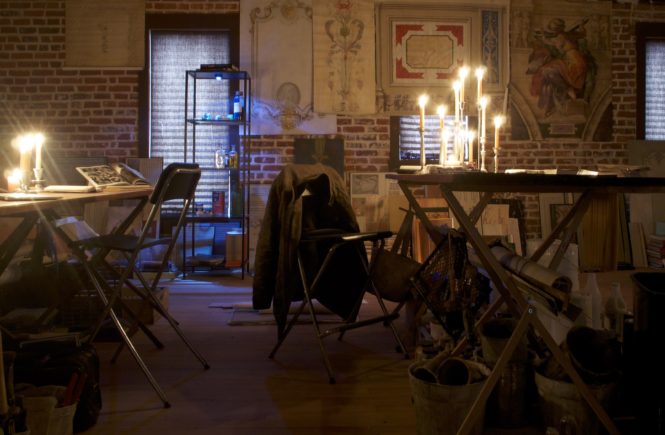Craftsmanship in America is on the rise. A great example is the craftsmanship that André brings to classical decorative painting. The career of decorative painting was born from the Greek theater in 400 BC when Greek set painters would wander the city, with patrons of the arts, and paint images from plays in homes. During the Dark Ages, painting was suppressed, as were many arts, until Charlemagne proclaimed a new age of expression and commissioned murals throughout the church. The craft of decorative painting, because of the guilds across Europe, transcended from the Greeks and Romans to the French and then to the English, at its height in the middle of the last millennium. The New World didn’t see it’s own decorative painter until Louis Comfort Tiffany, who was sent to study in Paris by his father.
Upon returning to the United States, Tiffany picked up the Greek torch and began painting bespoke homes for clients in a rising New York City. At this time, paint stores did not exist but there were boutique wall paper outlets selling hand painted papers from Europe. The boutiques started making the first US house paints, by hand at every store. To set them apart from competitors, they needed an edge and Tiffany with his finishes was just the trick.
Tiffany eventually transitioned into glass and the Tiffany Finishes were lost, leaving only an echo of classical decorative painting in the form of house painting, faux painting and rudimentary decorative work. Francisco André Martinez, a house painter at 15, picked up the spark left in American paint stores and swore to rekindle it into a roaring flame again. He pursued, with American audacity, the craft of classical decorative painting, ultimately reuniting with the master painters in Europe that descend from the same technical lineage of the guilds. The house of André, the largest group of master painters in history, works with those who choose to curate the work of master decorative painters in their homes. Through André clients find authenticity and beauty by means of personalization as has been done by the great curators of the Renaissance.

